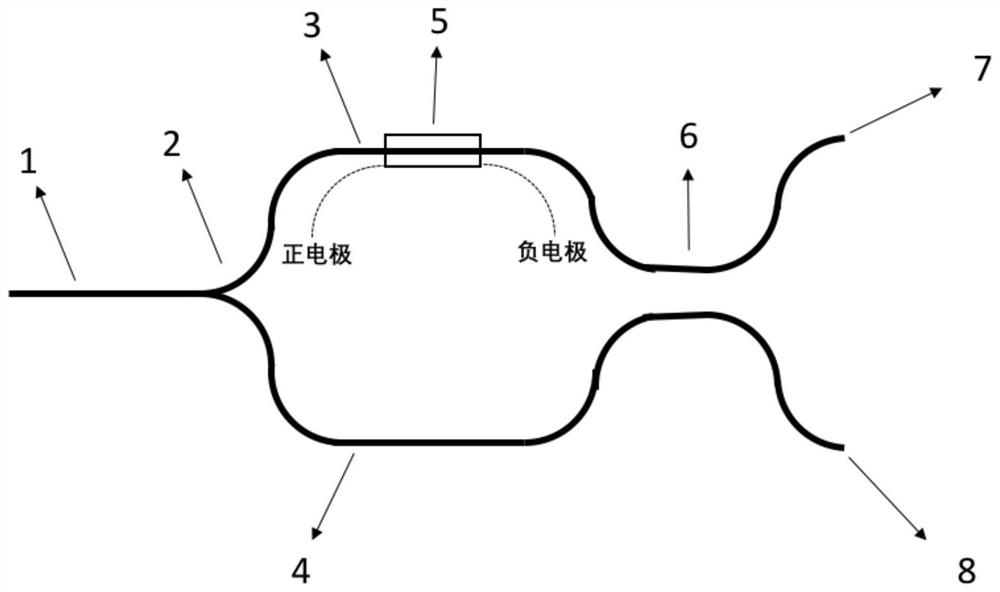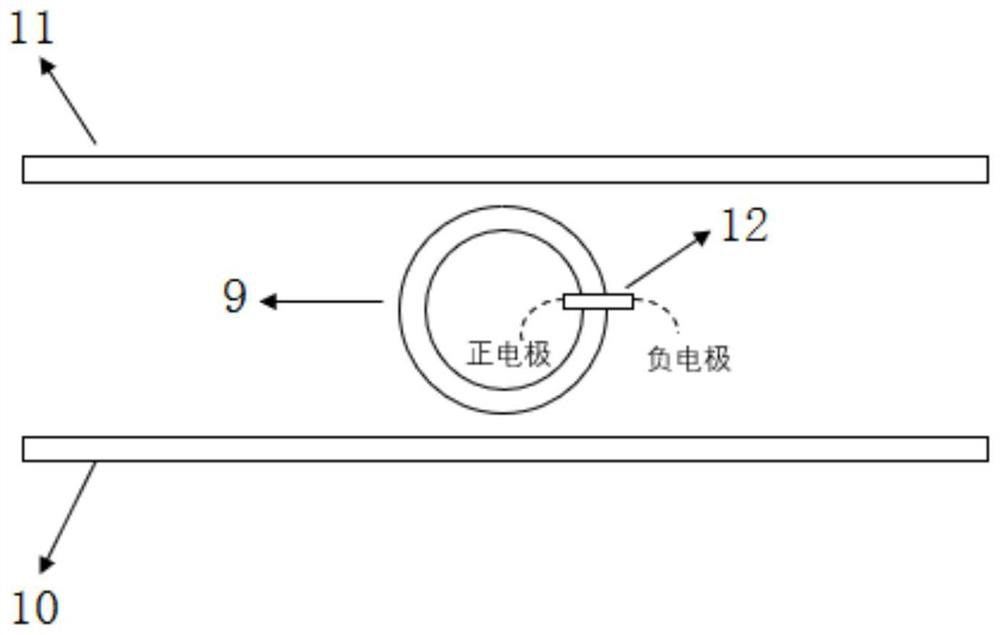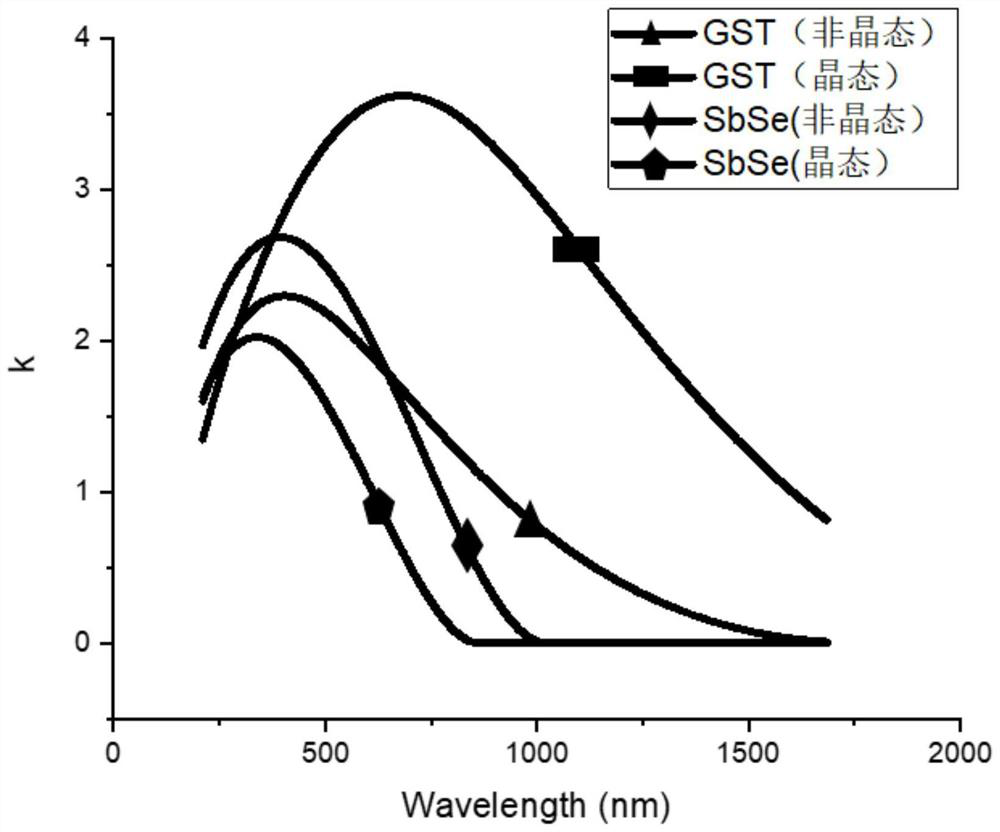Antimony triselenide silicon-based electric dimming switch, optical switch array and chip
A technology of antimony triselenide and optical switch array, which is applied in optics, nonlinear optics, instruments, etc., and can solve the problem of large loss and crosstalk of optical switch chips, high power consumption of optical switch chip drive, and low tuning efficiency of switching units. problems, to achieve the effect of increasing storage density, improving manufacturing and testing compatibility, and reducing energy consumption for device regulation
- Summary
- Abstract
- Description
- Claims
- Application Information
AI Technical Summary
Problems solved by technology
Method used
Image
Examples
Embodiment 1
[0035] This embodiment provides the first silicon-based electrical dimming switch based on antimony triselenide, which is realized based on a Mach-Zehnder interferometer (MZI) structure, such as figure 1 As shown, it includes a first input optical waveguide 1, a 1×2 branch optical waveguide 2, an interference arm optical waveguide 3, a reference arm optical waveguide 4, a directional coupler 6, a first output optical waveguide 7 and a second output optical waveguide 8, The output end of the first input optical waveguide 1 is connected to the input end of the 1×2 branch optical waveguide 2, and the two output ends of the 1×2 branch optical waveguide 2 are respectively connected to the interference arm optical waveguide 3 and the reference arm optical waveguide 4 The input end of the interference arm optical waveguide 3 and the output end of the reference arm optical waveguide 4 are respectively connected to the two input ends of the directional coupler 6, and the two output ends...
Embodiment 2
[0045] This embodiment provides a low-power silicon-based phase-change electric dimming switch array, such as Image 6 As shown, the optical switch array is composed of a cascaded series of the first antimony triselenide silicon-based electrical dimming switches in the above-mentioned embodiments. That is, the first output optical waveguide 7 and the second output optical waveguide 8 of the upper-level optical switch are respectively connected to the first input optical waveguide 1 of a lower-level optical switch, and n optical switches are cascaded in this way (1× 2 optical switches) to form an optical switch array. 1XN optical switch array can be used for multi-channel network detection, protection, multi-device testing, industrial automation, and all-optical interactive network construction. The number of output terminals can be set according to the user's needs. Each 1x2 optical switch is a fixed design. For example, if the user needs a 1x4 optical switch, the two output ...
Embodiment 3
[0048] This embodiment provides a low-power silicon-based phase-change electric dimming switch chip, which includes a doped silicon substrate, and any low-power silicon-based phase change chip in the above-mentioned embodiment 2 is integrated on the doped silicon substrate. Transformer dimmer switch array.
PUM
 Login to View More
Login to View More Abstract
Description
Claims
Application Information
 Login to View More
Login to View More - R&D
- Intellectual Property
- Life Sciences
- Materials
- Tech Scout
- Unparalleled Data Quality
- Higher Quality Content
- 60% Fewer Hallucinations
Browse by: Latest US Patents, China's latest patents, Technical Efficacy Thesaurus, Application Domain, Technology Topic, Popular Technical Reports.
© 2025 PatSnap. All rights reserved.Legal|Privacy policy|Modern Slavery Act Transparency Statement|Sitemap|About US| Contact US: help@patsnap.com



